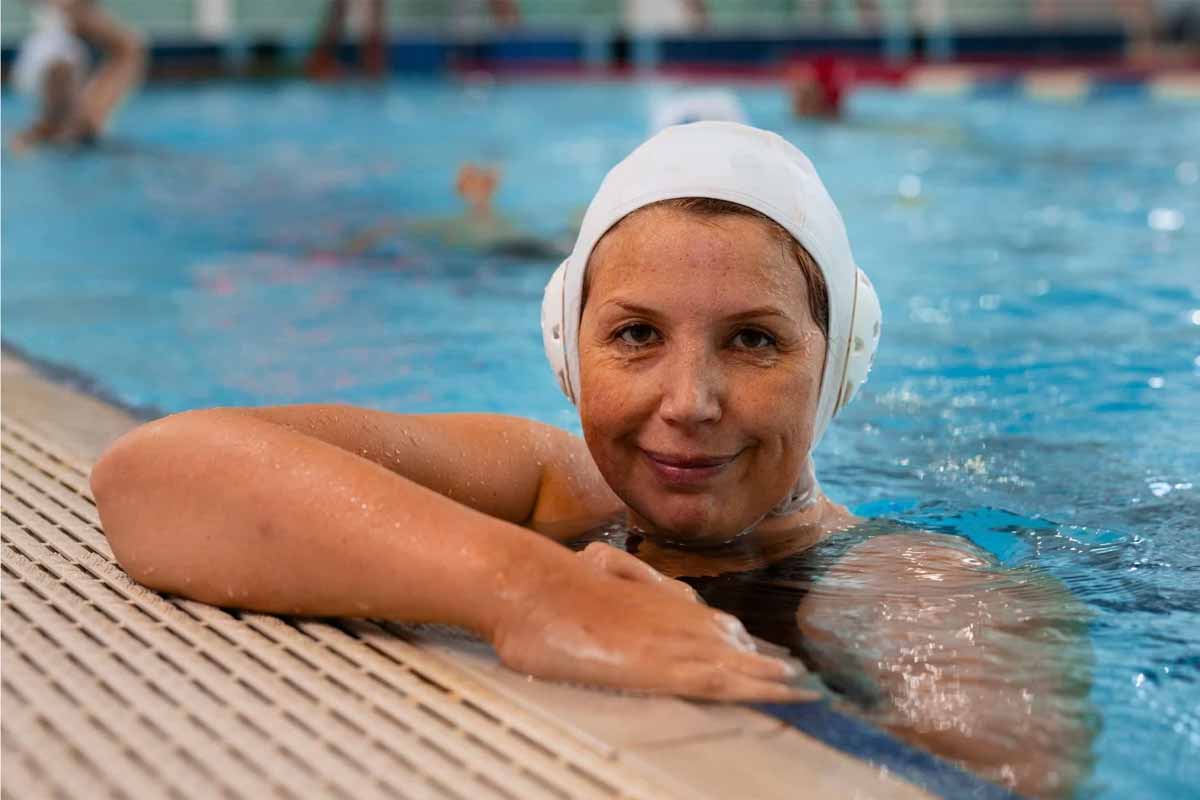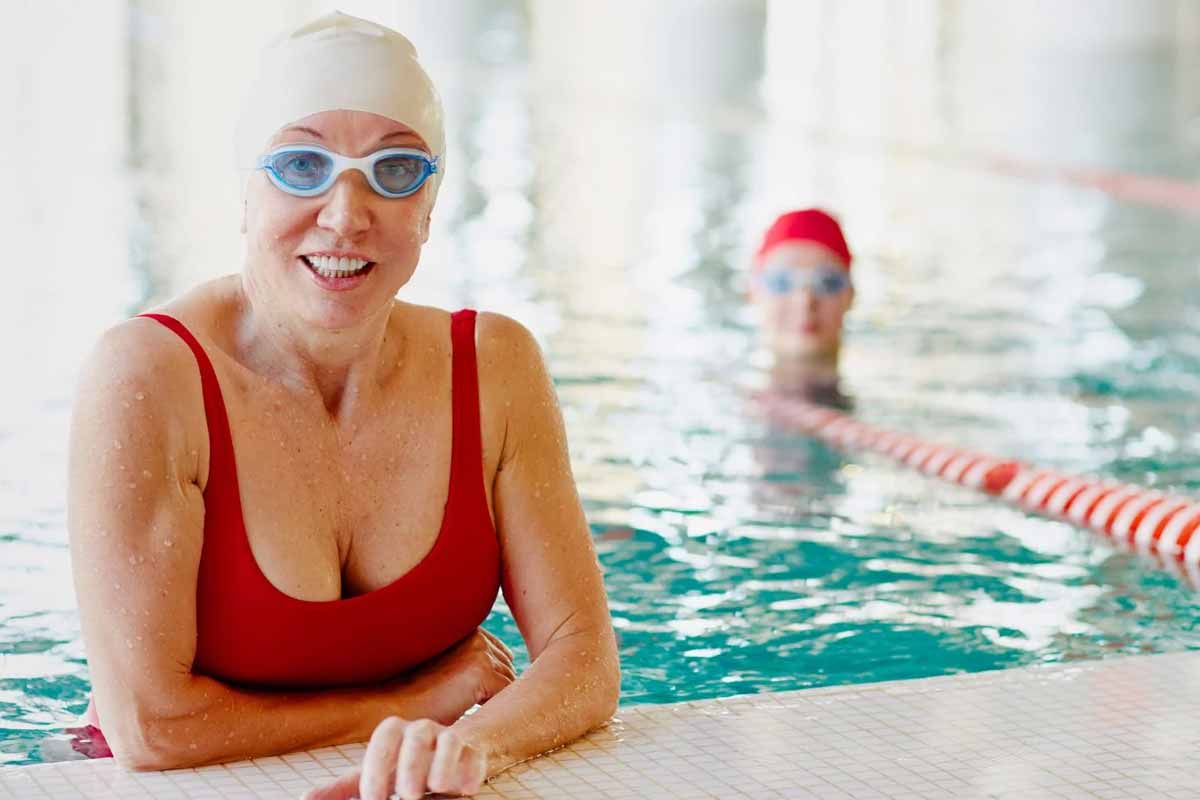Balance slips fastest when confidence fades, yet regaining both can start in warm water. Not laps, not routines of splashes, but a calm rhythm that steadies feet and clears fear. For adults over 65, the right exercise builds strength without jolts, protects joints, and trains quick reactions. Each slow move meets gentle resistance, so muscles work while nerves relax. The goal stays simple: fewer stumbles and safer steps.
Why this exercise builds steadier balance in less time ?
Neither squats nor jumps: the best water workout for seniors over 65 to boost strength and stability
Falls usually happen when the body fails to react to shifts in weight or uneven ground. Ai Chi trains those reactions while you move slowly and breathe with intent. The water supports you, so you can challenge stability without panic, and the gentle drag works every limb. The result is full-body work that feels safe, yet it asks your muscles to stay switched on.
The setting matters because warm, shoulder-deep water reduces joint load while it adds resistance to each reach and step. You push against the water, and the water pushes back. That constant feedback sharpens control through the hips and ankles, which guide balance. You repeat simple patterns until the body memorizes them, then you layer turns and stance changes. Progress stays gradual, and so does confidence in this exercise.
Ai Chi’s method in warm, shoulder-deep water
Ai Chi comes from Tai Chi, adapted for the pool. Movements begin with easy arm patterns that sync with deep breathing. You keep your gaze steady, lengthen the spine, and move with a smooth tempo. Stances shift from narrow to wide as you flow, which quietly asks your core to work and your feet to grip the pool floor. Calm cues replace strain, and tension fades as control improves.
Unlike lifting weights on land, you meet even resistance in every direction. The water helps you slow down, which makes each action precise and low impact. Buoyancy spares knees and hips while still training the legs to support you. The pool becomes a safe space for trial and error. You can focus on form because slipping feels unlikely, and that sense of safety lets you practice longer with steady quality.
Stronger legs, faster reactions, and safer everyday movement
Real gains show up when daily tasks feel easier. Rising from a chair, turning in a hallway, or stepping off a curb all depend on balance, leg strength, and timing. Ai Chi targets those needs with controlled shifts. You learn to move your center gently while the feet stay grounded. The pace stays slow, yet your focus stays sharp, and your breath sets a stable rhythm for each move in this exercise.
Common fall risks include weak thighs and calves, slowed reaction time, and shaky single-leg stance. Ai Chi tackles each one. The flowing patterns wake the hips and ankles, which steady gait. Repeated stance changes make quick corrections feel normal. That practice carries over to real life, because the body recognizes similar forces outside the pool and answers sooner, so stumbles turn into recoveries, not spills.
Pool routines that amplify this exercise without strain
Ai Chi pairs well with simple pool work. Water walking builds leg endurance because you push forward, backward, and sideways against gentle drag while the pool supports you. Add arm sweeps to engage the upper body and coordination as you stride. Short bouts fit between flows, and the pace stays easy, so you keep form. The goal is smooth steps and a steady trunk, not speed laps.
Band pulls at the rail help arms and posture. Fix a waterproof band to a secure point, then pull across the chest or down toward the hips. The moves teach the shoulder blades to anchor while the ribs stay quiet. Core control improves because the water tries to twist you, and you resist smoothly. You train strength without jolts, and you avoid wrist strain because the load spreads through the forearms.
Guidance, formats, and the road to solo confidence
Getting started goes best with skilled support. Healthcare professionals recommend Ai Chi for seniors because it meets several risk factors at once: weak legs, unstable balance, and slower reactions. An instructor keeps the pace right, and a physical therapist can tailor patterns around arthritis, back pain, or fatigue. You learn the sequence in short sets, and you rest when needed, so quality stays high throughout this exercise.
Small groups build social support and gentle accountability, and one-on-one sessions suit complex needs. Both formats use clear cues and repeatable flows. In time, the sequence becomes familiar, and that familiarity builds trust in your body. When the moves feel natural, you can practice on your own, still cautious, yet free of worry, and you carry that calm stability onto dry land.
Numbers, progress, and what to watch as you train
Stability grows when you practice often, not only hard. Two or three short pool sessions each week fit most seniors and leave room for rest. You can track progress with simple checks: stand on one leg near a counter, time a sit-to-stand set, or note how steady you feel on stairs. Small wins matter because they add up, and they show the plan is working even before big changes appear.
Warm up with easy walks, then flow. Keep steps light and eyes forward. Hold the rail when trying a new stance, and place a non-slip mat on deck. Ask a therapist before adding bands or longer sets, especially after a recent fall or surgery. The aim stays steady: protect joints, build strength, and teach the body to react. You train smart so daily life feels steady.











